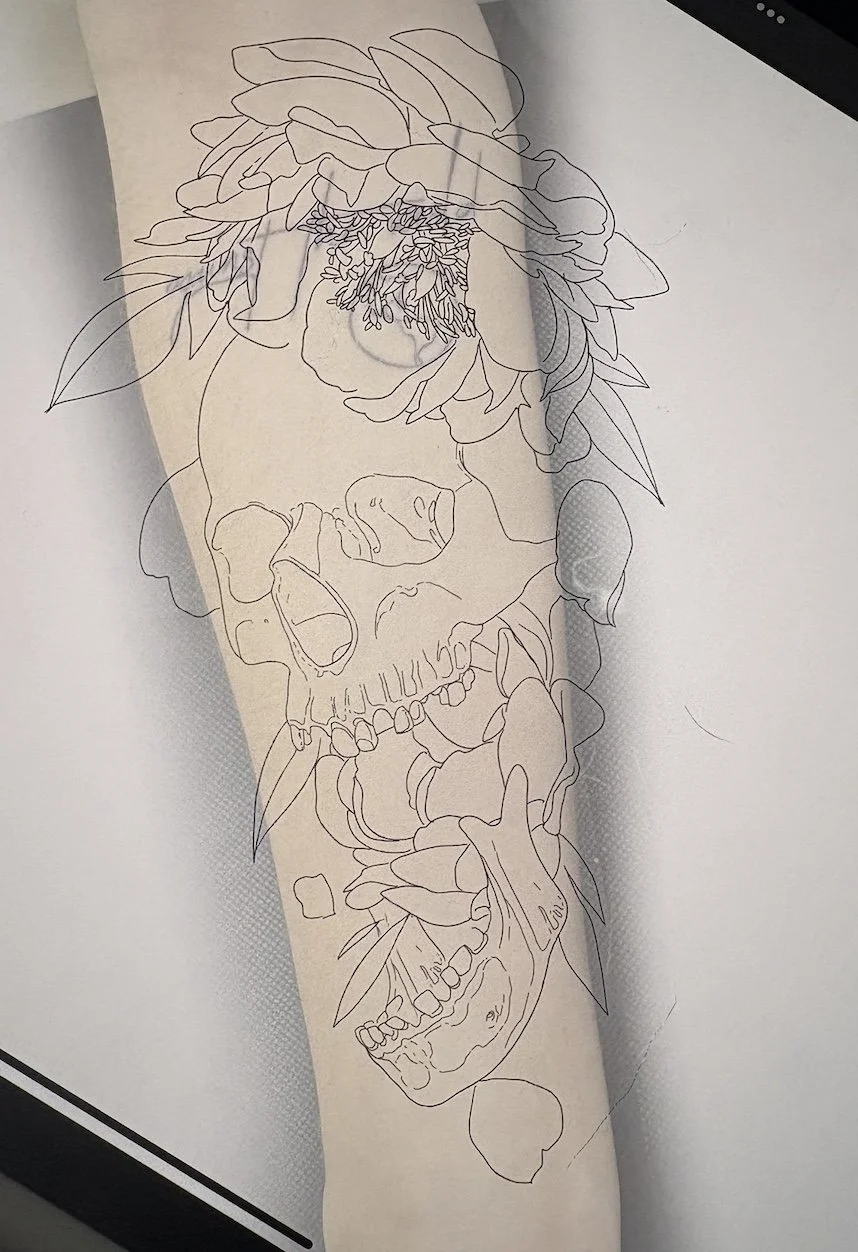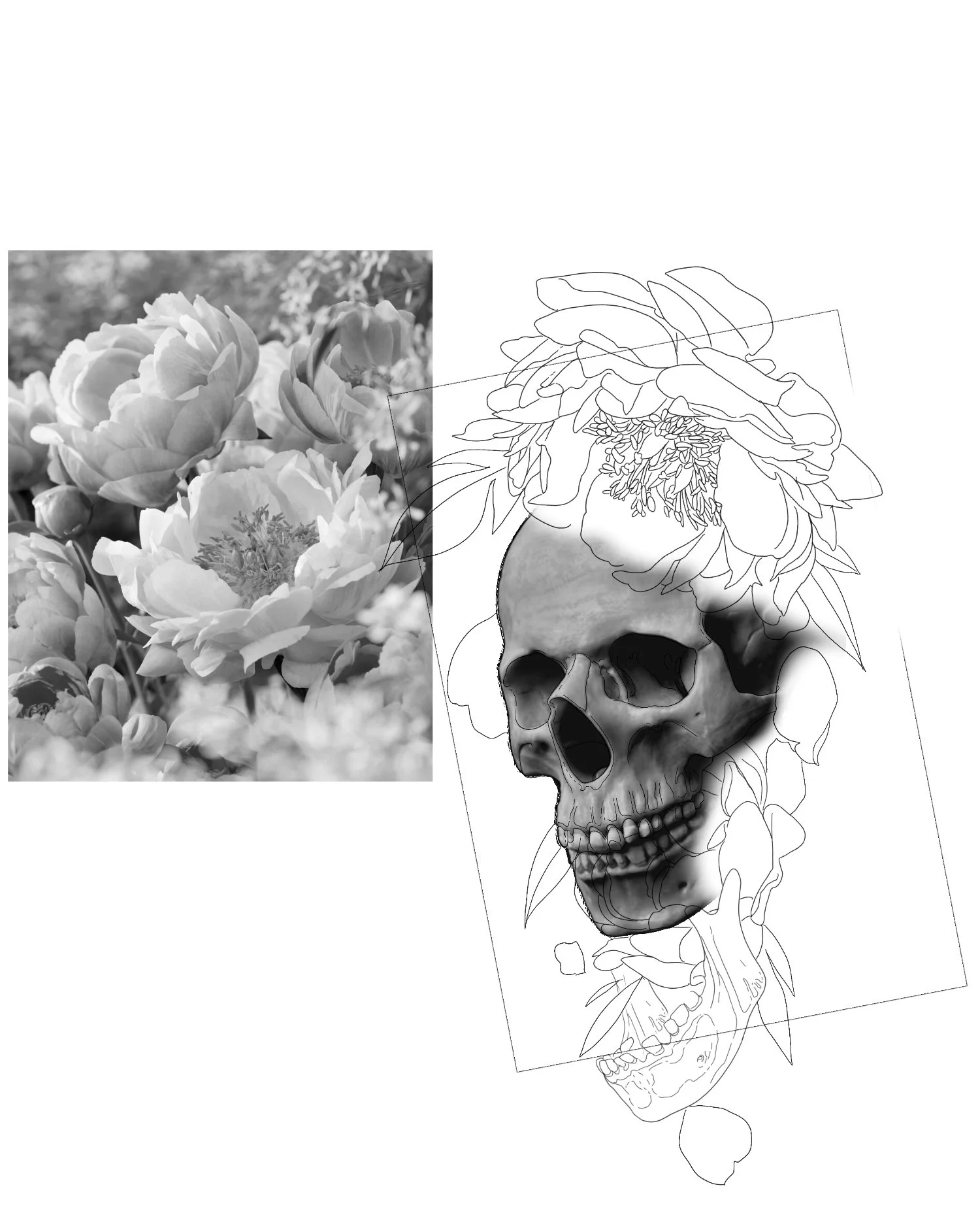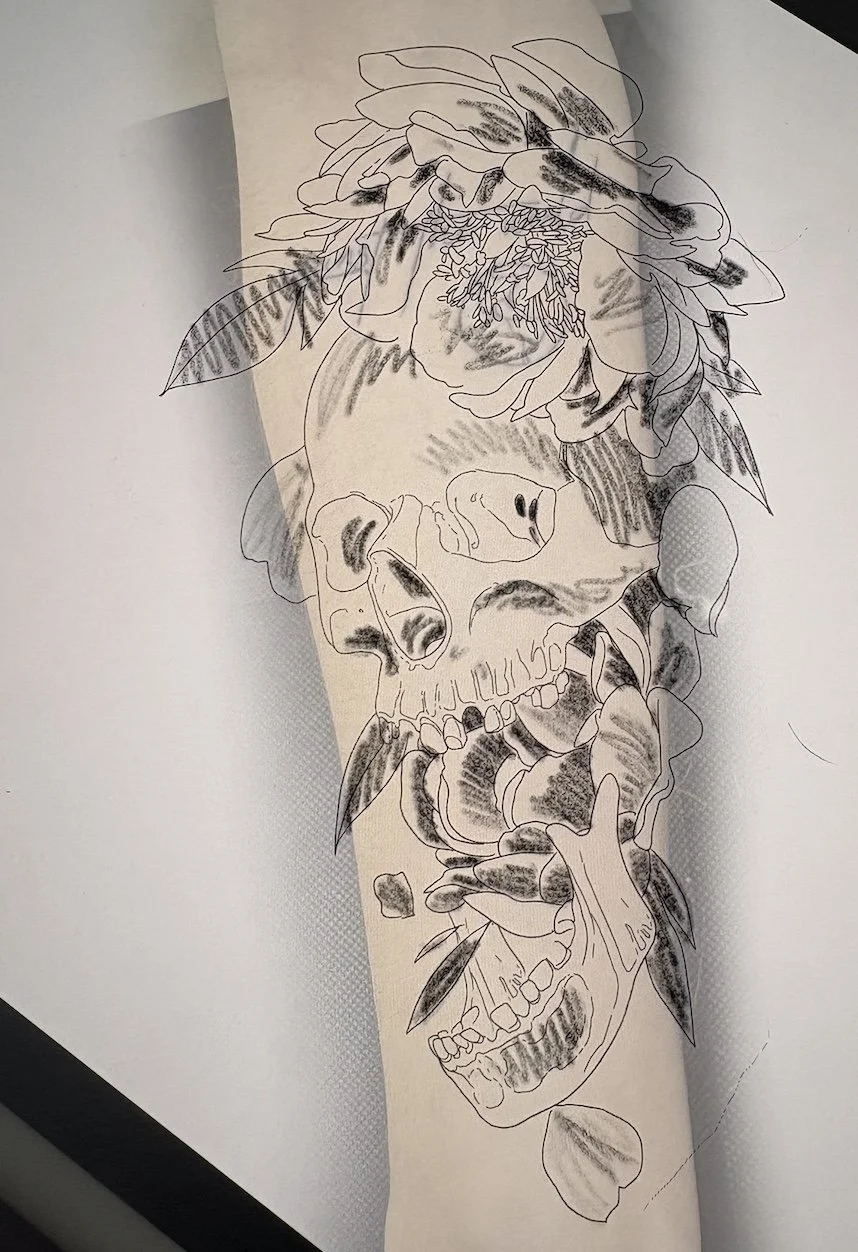Black and Grey Coverups Explained.
Completed & Healed Tattoo – The Final Transformation
This finished black and grey tattoo sits beautifully on the lower forearm, combining a detailed skull and soft peony petals to completely conceal the original design. The healed result shows how intentional contrast and shading create a seamless, natural look—proof that with the right design and technique, even heavily pigmented tattoos can be reborn into something timeless.
Black and grey tattoos age gracefully and withstand sun exposure better than color tattoos, making them perfect for active lifestyles. They’re durable, elegant, and allow for powerful visual depth using only the absence and presence of black pigment.
The Stencil – Laying the Foundation for a Successful Cover-Up
The stencil placement shows how carefully this design was engineered to overlap and disguise the previous tattoo (visible near the upper right side of the arm). Every petal, curve, and contour was strategically placed to redirect the viewer’s eye away from the old ink and toward the new focal points.
This planning stage is critical for any cover-up. Without thoughtful alignment and proportion, darker inks can “ghost” through, leaving unwanted shadows or shapes visible beneath the new art.
The Procreate Mock-Up – Designing with Purpose
Here, you can see how digital planning plays a key role in the process. Using Procreate, I mapped out exactly where the skull and peonies would sit to achieve the most natural flow on the client’s arm.
This stage helps both artist and client visualize how the new tattoo will move with the body—ensuring the cover-up fits organically, not just technically.
Rough Shading – Mapping the Depth and Values
In this image, you’ll see the early stage of shading, which identifies where the darkest tones need to be placed to fully conceal the old tattoo.
Black is essential in cover-ups—it must dominate the previous pigment completely. By working in gradients, from solid black to light grey washes, I create realistic depth while ensuring the previous design disappears under intentional value placement.
This step is where experience matters most; too much black can muddy the image, while too little won’t hide the old tattoo.
The Bare Arm – The Canvas Before Transformation
Here, we return to the beginning: the untouched forearm before the cover-up. Seeing this image helps clients understand just how much thought and design engineering go into making a cover-up appear effortless.
Not every tattoo can be easily hidden; success depends on understanding value, texture, and how new elements can redirect the eye.
Before & After Comparison – The Power of Thoughtful Design
This floral image shows the real-life peonies used as reference material for the tattoo. By studying how light naturally interacts with petals, I was able to reproduce soft, believable textures that contrast beautifully with the structured, high-detail skull.
Realistic references make all the difference when you’re merging organic shapes (flowers) with rigid anatomical elements (bones).
Interested in booking? Click thru this link here







